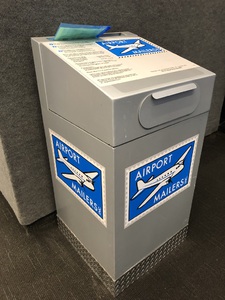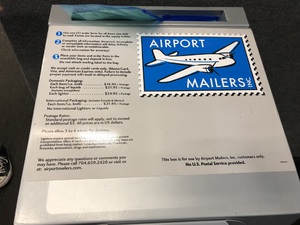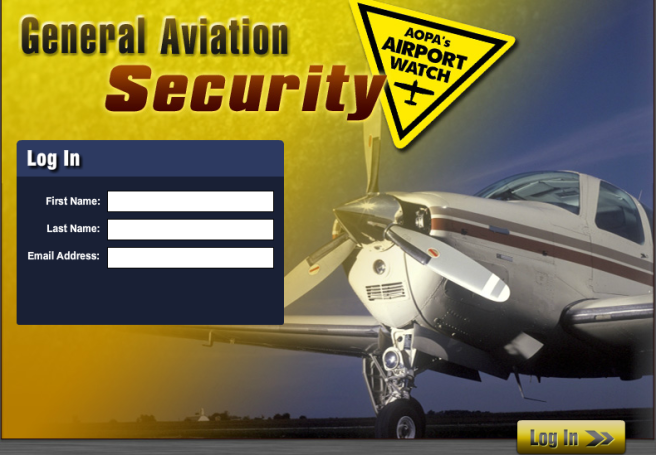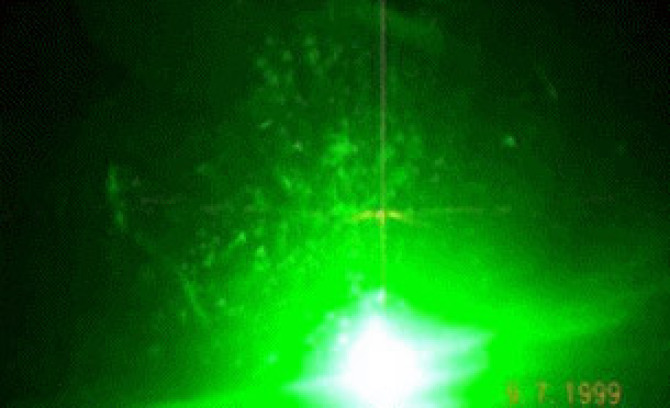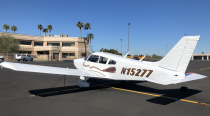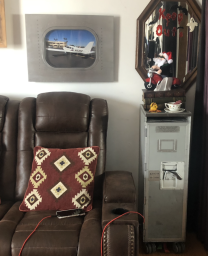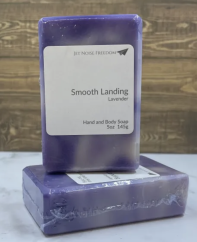
Crimes/Security
Criminal law is a balancing act
Between making society safe and protecting us all from false accusations and unfair punishment
Crime has an enormous impact on business!
Only the government can prosecute a crime and punish someone by sending him or her to prison
Restitution: when a guilty defendant must reimburse the victim for the harm suffered
Burden of proof: In a civil case -> preponderance of the evidence
In a criminal case -> beyond a reasonable doubt (demanding much more certainty than required in a civil trial)
Right to a jury: criminal defendant has right if charge could result in sentence of 6 months or longer
Felony: serious crime, for which a defendant can be sentenced to one year or more in prison
e.g. murder, robbery, rape, drug dealing, money laundering, wire fraud, embezzlement
Misdemeanor: less serious crime, often punishable by less than a year in a county jail
e.g. public drunkenness, driving without a license
Criminal procedure: process of investigating, interrogating, and trying a criminal defendant
Guilty: a judge or jury's finding that a defendant has committed a crime
Voluntary act: defendant is not guilty of a crime if she was forced to commit it - i.e. she is not guilty if she acted under duress
Entrapment: when the government induces the defendant to break the law, the prosecution must prove beyond a reasonable doubt that the defendant was predisposed to commit the crime
Gathering evidence - Fourth Amendment - prohibits government from making illegal searches and seizures of individuals, corporations, partnerships, and other organizations
Warrant: must specify with reasonable certainty the place to be searched and the items to be seized
Probable cause: based on all info presented, it is likely that evidence of a crime will be found in the place to be searched
Exclusionary rule: evidence obtained illegally may not be used at trial
Searches without a Warrant: seven circumstances under which police may search without a warrant:
1. Plain View
2. Stop and Frisk
3. Emergencies
4. Automobiles
5. Lawful Arrest
6. Consent
7. No Expectation of Privacy
Self-incrimination - Fifth Amendment - bars government from forcing any person to provide evidence against himself - accused cannot be forced to testify at trial
Right to a lawyer - Sixth Amendment - at all important stages of the criminal process
The Patriot Act: sweeping antiterrorist law - permits FBI to issue a national security letter (NSL) to communications firms e.g. Internet service providers (ISPs) and telephone companies - must furnish its customer records to government without divulging to customers
After arrest
Indictment: government's formal charge that the defendant has committed a crime and must stand trial
Grand jury: group of ordinary citizens that decides whether there is probable cause the defendant committed the crime with which she is charged
Arraignment: clerk reads formal charges of indictment - defendant must enter a plea
Plea bargain: agreement in which the defendant pleads guilty to a reduced charge, and the prosecution recommends to the judge a relatively lenient sentence
Trial and appeal
Double jeopardy: criminal defendant may be prosecuted only once for a particular criminal offense
Punishment: Eighth Amendment prohibits cruel and unusual punishment
Crimes that harm business
- Larceny: trespassory taking of personal property with the intent to steal it
- Fraud: deception of another person for the purpose of obtaining money or property from him
Wire fraud and mail fraud: involves use of interstate mail, telegram, telephone, radio or television to obtain property by deceit
Theft of honest services: prohibits public and private employees from taking bribes or kickbacks
- Arson: malicious use of fire or explosives to damage or destroy real estate or personal property
- Embezzlement: fraudulent conversion of property already in the defendant's possession
Crimes committed by business
Corporate liability: If an agent commits a criminal act within the scope of his employment and with the intent to benefit the corporation, the company is liable
Commonwealth v. Angelo Todesca Corp.
Selected crimes committed by business
RICO: Racketeer Influenced and Corrupt Organizations Act - powerful Federal statute originally aimed at organized crime now used in many criminal prosecutions and civil lawsuits
RICO prohibits using two or more racketeering acts to accomplish any of these goals:
1. investing in or acquiring legitimate businesses with criminal money
2. maintaining or acquiring businesses through criminal activity OR
3. operating businesses through criminal activity
Racketeering acts: any of a long list of specified crimes e.g. embezzlement, arson, mail fraud, wire fraud
Money laundering: using the proceeds of criminal acts either to promote crime or conceal the source of the money
Hiring illegal workers: I-9 must be completed within 3 days of hiring
Punishing a corporation
Fines
Compliance program: plan to prevent and detect criminal conduct at all levels of a company
Federal Sentencing Guidelines: detailed rules that judges must follow when sentencing defendants convicted of federal crimes
Title 18 of the United States Code, Crimes and Criminal Procedure
Title 49 of the United States Code, Transportation
Special Aircraft Jurisdiction of the United States
Violence at International Airports
(a) Offense.— A person who unlawfully and intentionally, using any device, substance, or weapon—
(1) performs an act of violence against a person at an airport serving international civil aviation that causes or is likely to cause serious bodily injury (as defined in section 1365 of this title) or death; or
(2) destroys or seriously damages the facilities of an airport serving international civil aviation or a civil aircraft not in service located thereon or disrupts the services of the airport,
if such an act endangers or is likely to endanger safety at that airport, or attempts or conspires to do such an act, shall be fined under this title, imprisoned not more than 20 years, or both; and if the death of any person results from conduct prohibited by this subsection, shall be punished by death or imprisoned for any term of years or for life.
(b) Jurisdiction.— There is jurisdiction over the prohibited activity in subsection (a) if—
(1) the prohibited activity takes place in the United States; or
(2) the prohibited activity takes place outside the United States and
(A) the offender is later found in the United States; or
(B) an offender or a victim is a national of the United States (as defined in section 101(a)(22) of the Immigration and Nationality Act (8 U.S.C. 1101 (a)(22))).
(c) Bar to Prosecution.— It is a bar to Federal prosecution under subsection (a) for conduct that occurred within the United States that the conduct involved was during or in relation to a labor dispute, and such conduct is prohibited as a felony under the law of the State in which it was committed. For purposes of this section, the term “labor dispute” has the meaning set forth in section 2(c) [1] of the Norris-LaGuardia Act, as amended (29U.S.C. 113 (c)), and the term “State” means a State of the United States, the District of Columbia, and any commonwealth, territory, or possession of the United States.
[1] So in original. Probably should be section “13(c)”.
Violation of national defense airspace
ADIZ – National Security Area – Prohibited areas – TFR
Destruction of aircraft or aircraft facilities
(a) Whoever willfully—
(1) sets fire to, damages, destroys, disables, or wrecks any aircraft in the special aircraft jurisdiction of the United States or any civil aircraft used, operated, or employed in interstate, overseas, or foreign air commerce;
(2) places or causes to be placed a destructive device or substance in, upon, or in proximity to, or otherwise makes or causes to be made unworkable or unusable or hazardous to work or use, any such aircraft, or any part or other materials used or intended to be used in connection with the operation of such aircraft, if such placing or causing to be placed or such making or causing to be made is likely to endanger the safety of any such aircraft;
(3) sets fire to, damages, destroys, or disables any air navigation facility, or interferes by force or violence with the operation of such facility, if such fire, damaging, destroying, disabling, or interfering is likely to endanger the safety of any such aircraft in flight;
(4) with the intent to damage, destroy, or disable any such aircraft, sets fire to, damages, destroys, or disables or places a destructive device or substance in, upon, or in proximity to, any appliance or structure, ramp, landing area, property, machine, or apparatus, or any facility or other material used, or intended to be used, in connection with the operation, maintenance, loading, unloading or storage of any such aircraft or any cargo carried or intended to be carried on any such aircraft;
(5) interferes with or disables, with intent to endanger the safety of any person or with a reckless disregard for the safety of human life, anyone engaged in the authorized operation of such aircraft or any air navigation facility aiding in the navigation of any such aircraft;
(6) performs an act of violence against or incapacitates any individual on any such aircraft, if such act of violence or incapacitation is likely to endanger the safety of such aircraft;
(7) communicates information, knowing the information to be false and under circumstances in which such information may reasonably be believed, thereby endangering the safety of any such aircraft in flight; or
(8) attempts or conspires to do anything prohibited under paragraphs (1) through (7) of this subsection;
shall be fined under this title or imprisoned not more than twenty years or both.
(b) Whoever willfully—
(1) performs an act of violence against any individual on board any civil aircraft registered in a country other than the United States while such aircraft is in flight, if such act is likely to endanger the safety of that aircraft;
(2) destroys a civil aircraft registered in a country other than the United States while such aircraft is in service or causes damage to such an aircraft which renders that aircraft incapable of flight or which is likely to endanger that aircraft’s safety in flight;
(3) places or causes to be placed on a civil aircraft registered in a country other than the United States while such aircraft is in service, a device or substance which is likely to destroy that aircraft, or to cause damage to that aircraft which renders that aircraft incapable of flight or which is likely to endanger that aircraft’s safety in flight; or
(4) attempts or conspires to commit an offense described in paragraphs (1) through (3) of this subsection;
shall be fined under this title or imprisoned not more than twenty years, or both. There is jurisdiction over an offense under this subsection if a national of the United States was on board, or would have been on board, the aircraft; an offender is a national of the United States; or an offender is afterwards found in the United States. For purposes of this subsection, the term “national of the United States” has the meaning prescribed in section 101(a)(22) of the Immigration and Nationality Act.
(c) Whoever willfully imparts or conveys any threat to do an act which would violate any of paragraphs (1) through (6) of subsection (a) or any of paragraphs (1) through (3) of subsection (b) of this section, with an apparent determination and will to carry the threat into execution shall be fined under this title or imprisoned not more than five years, or both. (a) Whoever willfully—
(1) sets fire to, damages, destroys, disables, or wrecks any aircraft in the special aircraft jurisdiction of the United States or any civil aircraft used, operated, or employed in interstate, overseas, or foreign air commerce;
(2) places or causes to be placed a destructive device or substance in, upon, or in proximity to, or otherwise makes or causes to be made unworkable or unusable or hazardous to work or use, any such aircraft, or any part or other materials used or intended to be used in connection with the operation of such aircraft, if such placing or causing to be placed or such making or causing to be made is likely to endanger the safety of any such aircraft;
(3) sets fire to, damages, destroys, or disables any air navigation facility, or interferes by force or violence with the operation of such facility, if such fire, damaging, destroying, disabling, or interfering is likely to endanger the safety of any such aircraft in flight;
(4) with the intent to damage, destroy, or disable any such aircraft, sets fire to, damages, destroys, or disables or places a destructive device or substance in, upon, or in proximity to, any appliance or structure, ramp, landing area, property, machine, or apparatus, or any facility or other material used, or intended to be used, in connection with the operation, maintenance, loading, unloading or storage of any such aircraft or any cargo carried or intended to be carried on any such aircraft;
(5) interferes with or disables, with intent to endanger the safety of any person or with a reckless disregard for the safety of human life, anyone engaged in the authorized operation of such aircraft or any air navigation facility aiding in the navigation of any such aircraft;
(6) performs an act of violence against or incapacitates any individual on any such aircraft, if such act of violence or incapacitation is likely to endanger the safety of such aircraft;
(7) communicates information, knowing the information to be false and under circumstances in which such information may reasonably be believed, thereby endangering the safety of any such aircraft in flight; or
(8) attempts or conspires to do anything prohibited under paragraphs (1) through (7) of this subsection;
shall be fined under this title or imprisoned not more than twenty years or both.
(b) Whoever willfully—
(1) performs an act of violence against any individual on board any civil aircraft registered in a country other than the United States while such aircraft is in flight, if such act is likely to endanger the safety of that aircraft;
(2) destroys a civil aircraft registered in a country other than the United States while such aircraft is in service or causes damage to such an aircraft which renders that aircraft incapable of flight or which is likely to endanger that aircraft’s safety in flight;
(3) places or causes to be placed on a civil aircraft registered in a country other than the United States while such aircraft is in service, a device or substance which is likely to destroy that aircraft, or to cause damage to that aircraft which renders that aircraft incapable of flight or which is likely to endanger that aircraft’s safety in flight; or
(4) attempts or conspires to commit an offense described in paragraphs (1) through (3) of this subsection;
shall be fined under this title or imprisoned not more than twenty years, or both. There is jurisdiction over an offense under this subsection if a national of the United States was on board, or would have been on board, the aircraft; an offender is a national of the United States; or an offender is afterwards found in the United States. For purposes of this subsection, the term “national of the United States” has the meaning prescribed in section 101(a)(22) of the Immigration and Nationality Act.
(c) Whoever willfully imparts or conveys any threat to do an act which would violate any of paragraphs (1) through (6) of subsection (a) or any of paragraphs (1) through (3) of subsection (b) of this section, with an apparent determination and will to carry the threat into execution shall be fined under this title or imprisoned not more than five years, or both.
Aircraft Piracy
Interference with cabin or flight crew
49 USC 46504 - aka air rage
False information
Pilots operating in air transportation without an airman's certificate
Lighting violations involving transporting controlled substances by aircraft not providing air transportation
Interference with air navigation
Aircraft Registration violations
Transporting hazardous material
(a) Offenses.— Whoever, in or affecting interstate or foreign commerce, knowingly and with the intent to defraud—
(1)
(A) falsifies or conceals a material fact concerning any aircraft or space vehicle part;
(B) makes any materially fraudulent representation concerning any aircraft or space vehicle part; or
(C) makes or uses any materially false writing, entry, certification, document, record, data plate, label, or electronic communication concerning any aircraft or space vehicle part;
(2) exports from or imports or introduces into the United States, sells, trades, installs on or in any aircraft or space vehicle any aircraft or space vehicle part using or by means of a fraudulent representation, document, record, certification, depiction, data plate, label, or electronic communication; or
(3) attempts or conspires to commit an offense described in paragraph (1) or (2),
shall be punished as provided in subsection (b).
(b) Penalties.— The punishment for an offense under subsection (a) is as follows:
(1) Aviation quality.— If the offense relates to the aviation quality of a part and the part is installed in an aircraft or space vehicle, a fine of not more than $500,000, imprisonment for not more than 15 years, or both.
(2) Failure to operate as represented.— If, by reason of the failure of the part to operate as represented, the part to which the offense is related is the proximate cause of a malfunction or failure that results in serious bodily injury (as defined in section 1365), a fine of not more than $1,000,000, imprisonment for not more than 20 years, or both.
(3) Failure resulting in death.— If, by reason of the failure of the part to operate as represented, the part to which the offense is related is the proximate cause of a malfunction or failure that results in the death of any person, a fine of not more than $1,000,000, imprisonment for any term of years or life, or both.
(4) Other circumstances.— In the case of an offense under subsection (a) not described in paragraph (1), (2), or (3) of this subsection, a fine under this title, imprisonment for not more than 10 years, or both.
(5) Organizations.— If the offense is committed by an organization, a fine of not more than—
(A) $10,000,000 in the case of an offense described in paragraph (1) or (4); and
(B) $20,000,000 in the case of an offense described in paragraph (2) or (3).
(c) Civil Remedies.—
(1) In general.— The district courts of the United States shall have jurisdiction to prevent and restrain violations of this section by issuing appropriate orders, including—
(A) ordering a person (convicted of an offense under this section) to divest any interest, direct or indirect, in any enterprise used to commit or facilitate the commission of the offense, or to destroy, or to mutilate and sell as scrap, aircraft material or part inventories or stocks;
(B) imposing reasonable restrictions on the future activities or investments of any such person, including prohibiting engagement in the same type of endeavor as used to commit the offense; and
(C) ordering the dissolution or reorganization of any enterprise knowingly used to commit or facilitate the commission of an offense under this section making due provisions for the rights and interests of innocent persons.
(2) Restraining orders and prohibition.— Pending final determination of a proceeding brought under this section, the court may enter such restraining orders or prohibitions, or take such other actions (including the acceptance of satisfactory performance bonds) as the court deems proper.
(3) Estoppel.— A final judgment rendered in favor of the United States in any criminal proceeding brought under this section shall stop the defendant from denying the essential allegations of the criminal offense in any subsequent civil proceeding brought by the United States.
(d) Criminal Forfeiture.—
(1) In general.— The court, in imposing sentence on any person convicted of an offense under this section, shall order, in addition to any other sentence and irrespective of any provision of State law, that the person forfeit to the United States—
(A) any property constituting, or derived from, any proceeds that the person obtained, directly or indirectly, as a result of the offense; and
(B) any property used, or intended to be used in any manner, to commit or facilitate the commission of the offense, if the court in its discretion so determines, taking into consideration the nature, scope, and proportionality of the use of the property on the offense.
(2) Application of other law.— The forfeiture of property under this section, including any seizure and disposition of the property, and any proceedings relating to the property, shall be governed by section 413 of the Comprehensive Drug Abuse and Prevention Act of 1970 (21 U.S.C. 853) (not including subsection (d) of that section).
(e) Construction With Other Law.— This section does not preempt or displace any other remedy, civil or criminal, provided by Federal or State law for the fraudulent importation, sale, trade, installation, or introduction into commerce of an aircraft or space vehicle part.
(f) Territorial Scope.— This section also applies to conduct occurring outside the United States if—
(1) the offender is a natural person who is a citizen or permanent resident alien of the United States, or an organization organized under the laws of the United States or political subdivision thereof;
(2) the aircraft or spacecraft part as to which the violation relates was installed in an aircraft or space vehicle owned or operated at the time of the offense by a citizen or permanent resident alien of the United States, or by an organization thereof; or
(3) an act in furtherance of the offense was committed in the United States.
Obstruction of justice
Search of Airline Passengers
- Pre-boarding screening
Courts have consistently held that the screening of airline passengers and their baggage by magnetometers and other devices constitutes a search within the meaning of the 4th Amendment of the US Constitution
Amendment IV
The right of the people to be secure in their persons, houses, papers, and effects, against unreasonable searches and seizures, shall not be violated, and no warrants shall issue, but upon probable cause, supported by oath or affirmation, and particularly describing the place to be searched, and the persons or things to be seized.
US Supreme Court has inferred a general right to privacy - not limited to homes but also travel with us to the airport
TSA can legally search us and our luggage without a warrant because the court has deemed some searches as reasonable:
1. searches carried out with the consent of the person being searched
2. emergency administrative searches
- Before reaching the secured area
e.g. video cameras
1. searches on reasonable suspicion - law enforcement can stop, question and frisk an individual whose behavior or appearance gives rise to reasonable suspicion - Terry Stop - Terry v. Ohio
profiling: officer's prejudices may lead to suspicion the officer deems reasonable but that are based upon factors e.g. race, color, religion, national origin, sex
American Civil Liberties Union (ACLU): profiling is ineffective and counterproductive
1996 - Computer Assisted Passenger Screening System (CAPS)
Terrorist watch list: the federal government has also given the airlines secure access to its list of individuals suspected of having terrorist connections
Baggage resolution programs: airlines have implemented these programs to assure that no checked bag is carried aboard an airliner unless the passenger who checked it has also boarded – match every bag to a passenger
- Airport entry security checkpoints
Control vehicular access to the terminal’s parking structures and curbside passenger pickup and drop-off areas
- General Aviation Security and Passenger Screening
General Aviation Airport Security Working Group: provide input to TSA’s Aviation Security Advisory Committee (ASAC)
Made up of:
Aircraft Owners and Pilots Association (AOPA)
Airport Consultants Council (ACC)
American Association of Airport Executives (AAAE)
Experimental Aircraft Association (EAA)
General Aviation Manufacturers Association (GAMA)
Helicopter Association International (HAI)
National Air Transport Association (NATA)
National Association of State Aviation Officials (NASAO)
National Business Aviation Association (NBAA)
US Parachute Association (USPA)
National Response Center: operates (866) GA SECURE hotline
AOPA Airport Watch system: includes airport warning signs – feeds reports to National Response Center – educational literature – training video
GAMA and Treasury Department: Guidelines for Establishing Anti-Money Laundering Procedures and Practices Related to the Purchase of General Aviation Aircraft
National Agricultural Aviation Association: produced educational program – Professional Aerial Applicators Support System (PAASS)
National Association of Flight Instructors (NAFI): developed series of security recommendations and best practices for flight schools and flight instructors
- Large Aircraft Security Program (LASP)
Take the AOPA course on GA SECURITY
Adobe Acrobat document [1.6 MB]
Adobe Acrobat document [287.3 KB]
Laser pointing at an aircraft became a federal crime in 2012, 18 USC 39A, with a maximum penalty of 5 years in prison. Furthermore, this act can be considered interfering with an aircraft, 18 USC 32, which is a felony and carries a penalty of up to 20 years in prison and a fine up to $250,000. To cap it all off, the FAA also can impose civil penalties.
FAA - Laser Hazards and Effects
FAA - Laser Education and News
FAA - Laser Laws and Enforcement
Report a Laser Incident to the FAA
In addition to being a federal crime some states have also made it a state crime, e.g. Colorado laws getting tougher for people who point lasers at aircraft
Adobe Acrobat document [106.8 KB]
Germanwings crash: Co-pilot researched suicide methods, cockpit doors
Woman gets 12 1/2 years for hijack
Controversial inflight device: Should the Knee Defender be banned?
Platinum Jet charter pilot pleads guilty to illegal flights following Teterboro Airport crash scrutiny
Boy in Plane Crash Is Recalled as Patriotic
Juneyao pilots slammed over Qatar Airways emergency landing
Date: 23 June 1985
Type of airline / aircraft: Air-India Boeing 747 (‘Kanishka’)
Flight No.: AL 182
Type of attack: Air sabotage
No. of attackers: ?
No. of passengers/crew/total: 307/22
Destination: En route from Toronto to Bombay via Montreal and London
Terrorists identification: Sikh terrorists named ‘The Dashmesh Regiment’
Terrorist demands:——
Casualties / Injuries: All 329 passengers and crew were murdered
Incident results /remarks:
- The aircraft exploded over the Atlantic
- A Semtex Plastic bomb device, hidden in a Sanyo radio device that was placed in the cargo compartment after been transferred from a connecting flight,
exploded during flight
- The x-ray machine at Toronto airport was faulty and a security check was done by using hand-held bomb detectors, which couldn’t detect the Semtex bomb
anyway.
- Two main suspects were Ajaib Singh Bagri and Ripudaman Singh Malik. The motive was to retaliate against the Indian military attack of the Golden Temple
at Amristar (1984). The terrorists operated on behalf of the struggle for the independence of Khalistan in the Punjab
- It was suggested that since no official responsibility claim was issued, it was assumed that the suspected Sikh terrorists had intended to blow up the
jet while it was on the ground at Heathrow airport. Since the jet was behind schedule, the bomb went off in mid-air.
Aircraft crashes after crocodile on board escapes and sparks panic - Telegraph
Life Changer - The Horrific Story of FedEx Flight 705
Supervisor accused of a 20-year security breach at Newark Airport
Man impersonating pilot arrested on US Airways flight
Jet Skier Who Exposed JFK Airport's Security Tried to Get Caught
Indiana man charged after gun found in carry-on bag at Midway
Sixteen Charged with Selling Bad Aircraft Windows
D.B Cooper: Everything you need to know in 5 minutes
Two men at two separate airports in NJ and AZ climb high-security fences and scurry onto runway
A Short History of Air Hijacking
Helios flight 522 accident of 2005.
It was a tragic, but very interesting series of events that led to the death of all 121 souls on board. It was literally a flying ghost ship, with everyone on board (except one flight attendant) frozen to death in their seats before the plane ran out of fuel. Hypoxia, poor maintenance, poor management and pilot error (really this time) also contributed to the crash. It is also credited as the first fatal accident where the locked cockpit door requirement was considered a factor since the September 11th requirement.
Crossing the Border
ALASAAD V. MCALEENAN - No. 17-cv-11730-DJC (D. Mass Nov. 12, 2019)
On November 12, 2019, Judge Casper of the U.S. District Court for the District of Massachusetts held that suspicionless searches of electronic devices at the border violate the Fourth Amendment, in what the ACLU is calling “a major victory for privacy rights.” The suit, Alasaad v. McAleenan, was filed by the American Civil Liberties Union, the Electronic Frontier Foundation, and the ACLU of Massachusetts on behalf of 11 travelers whose laptops and smartphones were searched at U.S. ports of entry without individualized suspicion. Of the 11 plaintiffs, 10 were United States citizens. The court raised the bar for border seizures, requiring that border officers show an individualized suspicion before the seizure and examination of an electronic device.
While the Fourth Amendment prohibits certain searches and seizures without a warrant, from its inception, courts have held there to be a “border exception,” interpreted to allow examination of “persons and property crossing into this country” without a warrant or even individualized suspicion. The exception dates back to the Collection Act of 1789, authorizing the boarding and search of ships. The border exception is why Customs and Border Protection (“CBP") officers can search a bag at the airport. In 2018, CBP conducted more than 33,000 searches of personal electronic devices.
Starting in 1789 and for the next 200 or so years, the reach of the border exception was limited to the physical objects a searchee was transporting. The risk to privacy, however, has changed with the advent of the personal computer, portable hard-drives, laptops, and finally the smartphone. Seizing a smartphone allows access to a vast amount of personal information, but at the border, seizure may require no warrant, no probable cause, and no suspicion. In the digital age, privacy concerns have brought the border exception and other exceptions to the warrant requirement under increased scrutiny.
Alasaad builds on a series of cases that have chipped away at both the border exception and the routine status of forensic searches of personal electronics. In particular, the Alasaad court relies on the landmark 2014 Supreme Court decision Riley v. California, 573 U.S. 373 (2014). In Riley, the Court held that the “search incident to arrest” exception, allowing warrantless searches after arrests, did not justify dispensing with the warrant requirement for searches of digital data on arrestees’ cell phones. The Court balanced the interests of the government against the rights of the searchee, holding that the “extraordinary” privacy concerns outweigh the risk of destruction of evidence and other considerations. The court in Alasaad holds, “[t]he Court’s reasoning in Riley holds the same force when applied to border searches.”
The Alasaad court also cites United States v. Kolsuz, 890 F.3d 133 (4th Cir. 2018), and United States v. Kim, 103 F. Supp.3d 32 (D.D.C. 2015). These offspring of the Riley decision hold that searches of personal electronics are non-routine searches (as are strip searches and forced x-rays) and thus held to a higher standard of individual suspicion than is a routine search (such as examining a bag). The court further cites United States v. Montoya de Hernandez, 473 U.S. 531 (1985), holding that the full effect of the border exception does not apply to non-routine searches, which at least require reasonable suspicion. The court concluded that the border exception thus does not apply to the search of personal electronics.
The Alasaad decision joins the Fourth Circuit and Ninth Circuit in requiring at least a reasonable suspicion to conduct a forensic search of an electronic device at the border, in what has become a growing circuit split. The Eleventh Circuit took the opposing stance in United States v. Touset, 890 F.3d 1227 (11th Cir. 2018), holding that “searches at the border of the country ‘never require probable cause or a warrant,’” determining that Riley was not applicable because that case did not involve the border exception. The Eleventh Circuit dismissed privacy concerns based upon either the quantity or personal nature of data stored on an electronic device. Rather, the court was of the view that, “[i]f anything, the advent of sophisticated technological means for concealing contraband only heightens the need of the government to search property at the border unencumbered by judicial second-guessing,” citing the necessity of searches of electronic devices to prevent the dissemination of child pornography. While the court in Alasaad denied without prejudice the plaintiffs’ request for injunctive relief and expungement of the information gathered from searches of plaintiffs’ devices, the ACLU is optimistic that the ruling will lead to changes in federal practices. “By putting an end to the government’s ability to conduct suspicionless fishing expeditions, the court reaffirms that the border is not a lawless place and that we don’t lose our privacy rights when we travel,” said Esha Bhandari, staff attorney with the ACLU.
Contact Me
Sarah Nilsson, J.D., Ph.D., MAS
602 561 8665
You can also fill out my
Get Social with Me
Legal Disclaimer
The information on this website is for EDUCATIONAL purposes only and DOES NOT constitute legal advice.
While the author of this website is an attorney, she is not YOUR attorney, nor are you her client, until you enter into a written agreement with Nilsson Law, PLLC to provide legal services.
In no event shall Sarah Nilsson be liable for any special, indirect, or consequential damages relating to this material, for any use of this website, or for any other hyperlinked website.
Steward of
I endorse the following products
KENNON (sun shields)
